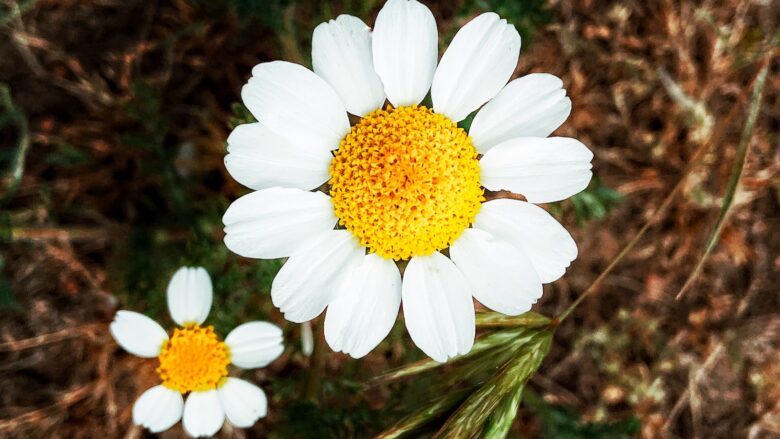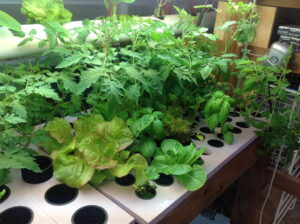Welcome to the world of indoor hydroponics, where your green thumb can flourish even in the heart of winter. As you dive into this captivating and innovative way of growing plants, you may encounter a few hiccups along the way – but fear not, for we are here to guide you through the maze of common issues and offer tips to keep your hydroponic garden thriving. From finicky nutrient imbalances to sneaky pest invasions, this article aims to unravel the mysteries and solve the puzzles that stand in the way of your indoor horticultural success. So, grab your gardening gloves and let’s embark on a journey of troubleshooting and triumph in the vibrant world of indoor hydroponics.
Common Issues in Indoor Hydroponics: Troubleshooting Guide
Solving Common Issues in Indoor Hydroponics: Tips and Troubleshooting
Hydroponics is an innovative way to grow plants indoors, but it can come with its fair share of challenges. If you’re experiencing issues in your indoor hydroponic system, worry not! We’ve compiled a handy troubleshooting guide to help you overcome these common obstacles and ensure your plants thrive.
1. Nutrient Deficiencies: Plants need a precise balance of nutrients to grow properly. If you notice yellowing leaves or stunted growth, your plants may be lacking essential minerals. Consider adjusting the nutrient mix, and monitor the pH levels regularly to maintain optimal nutrient uptake.
2. Root Rot: Root rot is a common problem in hydroponics caused by overwatering or poor oxygenation. To prevent this, make sure your system has proper drainage and circulation. Maintain a healthy environment by using sterilized equipment and avoiding excessive moisture.
3. Pest Infestation: Just like traditional gardening, hydroponics can attract unwanted pests such as aphids or mites. Keep a close eye on your plants for any signs of infestation, like wilting leaves or tiny insects. Introduce natural predators or use organic insecticides and regularly sanitize your system to minimize the risk of pests.
Enhancing Nutrient Absorption: Key Strategies and Techniques
Indoor hydroponics has revolutionized the way we grow plants, enabling us to cultivate nutrient-rich crops year-round. However, even with this advanced technology, there are still common issues that can arise when it comes to nutrient absorption. To ensure optimal growth and yield, it’s important to implement key strategies and techniques that enhance the absorption of nutrients by your plants.
1. pH Monitoring and Adjustment: Maintaining the correct pH range is crucial for nutrient absorption. Regularly test the pH level of your hydroponic solution using a pH meter, and adjust it accordingly by adding pH-up or pH-down solutions. Most plants thrive in a slightly acidic pH range of 5.5 to 6.5, but it’s essential to research the specific pH requirements of the plants you are growing.
2. Proper Nutrient Balance: Achieving the right balance of nutrients is essential for healthy plant growth. Ensure that your hydroponic solution contains a complete and balanced spectrum of essential nutrients, including nitrogen, phosphorus, potassium, calcium, magnesium, and trace elements. Refer to nutrient solution charts or consult with experts to determine the optimal nutrient ratios for your specific plant varieties.
3. Root Health and Oxygenation: Maintaining healthy roots and providing adequate oxygenation in the hydroponic system is vital for nutrient absorption. Properly clean and sterilize your growing containers and use quality growth media that promote root health. Additionally, consider implementing oxygenation techniques such as air stones or air pumps to increase the oxygen levels around the roots, ensuring efficient nutrient uptake.
By incorporating these key strategies and techniques into your indoor hydroponics setup, you can effectively enhance nutrient absorption and overcome common issues. Remember to regularly monitor and adjust pH levels, maintain a proper nutrient balance, and prioritize root health and oxygenation. With these practices in place, you’ll be well on your way to maximizing the potential of your hydroponic garden.
Preventing Root Rot: Effective Measures and Proactive Care
In indoor hydroponics, one of the most common issues that growers face is root rot. This fungal disease occurs when the roots are submerged in water for extended periods, leading to their decay. However, with effective measures and proactive care, you can prevent root rot and ensure the health of your hydroponic plants.
One important step in preventing root rot is to maintain proper water circulation and aeration in your hydroponic system. This can be achieved by using an air pump and air stones to oxygenate the water. When the oxygen levels are high, it creates an inhospitable environment for the fungus that causes root rot. Additionally, make sure to regularly clean and disinfect the hydroponic system to remove any potential sources of contamination.
Another crucial measure for preventing root rot is to carefully monitor the water temperature in your hydroponic system. The ideal temperature range for most hydroponic plants is between 65-75°F (18-24°C). Higher temperatures can promote the growth of the root rot fungus, so be sure to use a thermometer to track and maintain the appropriate water temperature. Additionally, if you notice any signs of root rot, such as wilting or discolored leaves, take immediate action to address the issue by trimming away affected roots and treating the plants with an appropriate fungicide.
Ensuring Adequate Lighting: Optimizing Conditions for Plant Growth
Solving Common Issues in Indoor Hydroponics: Tips and Troubleshooting
Growing plants hydroponically indoors can be a rewarding endeavor, but it requires careful attention to the lighting conditions in order to optimize growth. Adequate lighting is crucial for plants to carry out photosynthesis effectively, ensuring they receive the energy they need to thrive. Here are some useful tips and troubleshooting advice to help you ensure your plants are getting the optimal lighting conditions they require:
- Choose the right type of lighting: Different plants have varying lighting needs. While fluorescent lights provide a good spectrum for most plants, considering utilizing LED lights or even high-pressure sodium (HPS) lights for specific growth stages to enhance plant development.
- Provide the appropriate light intensity: The distance between the light source and the plants significantly affects the light intensity they receive. Aim to position the lights at an optimal distance from the plants, ensuring they receive enough light without causing heat stress.
- Monitor lighting duration: Plants require a balance between light and dark periods for growth and rest. Set up a timer to ensure your plants receive appropriate light exposure. Most plants require 14-16 hours of light per day during their growing phase and 8-10 hours during their rest phase.
Maintaining Proper pH Levels: Tips to Monitor and Adjust Hydroponic Solutions
One of the most important factors to consider when it comes to indoor hydroponics is maintaining proper pH levels in your nutrient solution. This crucial aspect can greatly affect the overall health and productivity of your plants. Fortunately, with a few simple tips and some troubleshooting techniques, you can easily monitor and adjust the pH of your hydroponic solution.
First and foremost, it is essential to regularly monitor the pH levels of your hydroponic solution. This can be easily done using a pH meter or pH test strips. Ideally, the pH level should fall within the range of 5.5 to 6.5 for most hydroponic crops. Anything above or below this range can lead to nutrient deficiencies, poor plant growth, and even plant death. By regularly checking and documenting the pH levels, you can identify any fluctuations and take immediate action to rectify the situation.
If you find that the pH level of your hydroponic solution is too high or too low, don’t panic! There are simple ways to adjust the pH and bring it back to the optimal range. This can be done by using pH up or pH down solutions, which are readily available in most garden supply stores. Gradually add small amounts of the appropriate solution to your nutrient reservoir while monitoring the pH level until it reaches the desired range. Remember to always follow the manufacturer’s instructions and make adjustments slowly to prevent sudden pH swings that could shock your plants.
Addressing Temperature Fluctuations: Strategies for Ideal Environmental Control
When it comes to indoor hydroponics, maintaining the perfect temperature is crucial for the health and growth of your plants. Temperature fluctuations can adversely affect nutrient absorption, metabolism, and overall plant development. While these variations may pose challenges, fear not! We have compiled a list of effective strategies and tips to help you achieve ideal environmental control and optimize your hydroponic setup.
To combat temperature fluctuations, first and foremost, invest in a reliable thermometer. This simple tool will be your ally in monitoring the temperature of your indoor garden. Place the thermometer at plant level to get accurate readings. Ensure that the temperature stays within the suitable range for your specific plant varieties. Remember, temperature requirements can vary among different crops, so it’s essential to do your research.
Another effective approach is to utilize proper ventilation. Poor air circulation can trap heat and cause temperature imbalances. Installing fans strategically throughout your hydroponic system can help maintain a consistent temperature. Consider placing fans near heat-generating equipment, such as grow lights or pumps, to dissipate excess warmth. Moreover, periodic airflow throughout your grow space can also reduce the risk of pests and diseases.
In conclusion, navigating the world of indoor hydroponics may seem like venturing into uncharted territory, but fear not! With a little knowledge and a willing green thumb, you can triumph over common issues and achieve thriving hydroponic gardens from the comfort of your own home.
Remember, troubleshooting is an essential part of any hydroponic journey. Embrace the challenges that come your way, for they will ultimately refine your skills and deepen your love for this incredible gardening method. Ranging from nutrient imbalances to pest invasions, the solutions are at your fingertips, waiting to be discovered.
Take these tips to heart and never be deterred by setbacks. Stay vigilant in monitoring your plants’ health, maintain a clean and balanced system, and address any issues promptly. The rewards will be abundant, from bountiful harvests of fresh, pesticide-free produce to a renewed sense of pride and satisfaction in your gardening prowess.
In your hydroponic oasis, marvel at your verdant wonders, knowing that you have overcome obstacles that once seemed insurmountable. Share your knowledge with fellow passionate growers and inspire them to embark on their hydroponic adventures as well.
The world of indoor hydroponics invites us to redefine how we connect with the Earth, offering a sustainable and efficient alternative to traditional soil-based gardening. So, my fellow cultivators, arm yourselves with the wisdom and troubleshooting prowess gained from this article, and let your hydroponic dreams take root and flourish. Happy growing!



